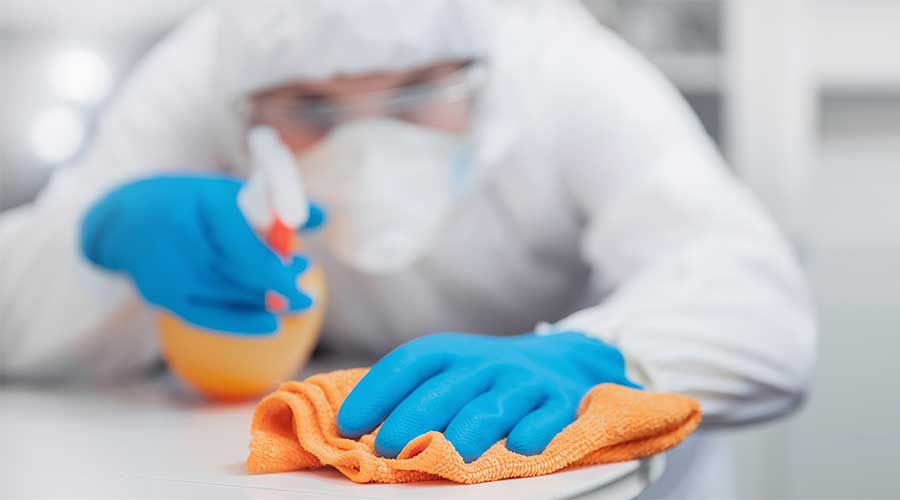All clinically relevant pathogens that are acquired via contact with surfaces remain viable long enough to present a risk to the next patient. Infection prevention and control teams (IPCT) refer to these pathogens as alert organisms. Chemical disinfectants used in the healthcare environment must be able to kill these alert organisms to minimize the risk of cross-contamination.
While many alert organisms are resistant to antibiotics, there is scant evidence that these multi-drug resistant organisms (MDRO) are more difficult to kill with disinfectants than sensitive pathogens, especially at in-use concentrations.
“What does it kill?” seems to be the single issue that many people believe is the first and last word in disinfectants. When focusing on one feature of disinfectants, it can be difficult to see the forest for the trees.
If that is not the first question that pops into your mind when a sales rep wants to tell you about a new disinfectant formulation, what is your question? “What is the contact time?” or, “What is the cost?” or how about, “Who else is using it?”
With the emergence of superbug pathogenic organisms such as Carbapenem-resistant Enterobacteriaceae (CRE), methicillin-resistant Staphylococcus aureus (MRSA), vancomycin-resistant Enterococci (VRE), as well as more virulent strains of Clostridium-difficile (C-diff), the need for the right surface disinfectant in the hands of educated professional cleaners is paramount. Perhaps the time has come for new disinfectants to challenge some of the legacy disinfectants to a duel of pros and cons.
Inappropriate surrogates and test organisms
In my view, the common practice of allowing long lists of organisms on product labels has no justification in science. Many listed organisms are relatively fragile outside hosts and, thus, not known to spread through environmental means. Listing such pathogens clearly contributes to the fear factor.
The following points summarize the way the presence of alert organisms, including MDROs, in the healthcare setting impart risk to the next patient:
- Alert organisms survive on surfaces in care environments and are readily transferred to healthcare workers, subsequent patients and other surfaces via contact.
- Hand hygiene and glove use is insufficiently well practiced, negating the risk.
- Alert organisms are not solely found in the environment or on the equipment associated with known positive patients. This might be influenced by an inability to identify all the people who present a risk in real time.
- Inability to provide isolation rooms for all patients who present a cross-contamination risk.
In 2020, we found that non-critical surfaces have become critical in the processing of patient-care equipment and environmental surfaces.
A meta-analysis of research showed exposure to infected/colonized roommates and prior room occupants significantly increased the risks of healthcare-associated infections (HAI) with the same organism. Health authorities and hospitals should attach higher importance to the fact that current standards or practices for disinfection and isolation are often not sufficient to block transmission of pathogens in the healthcare settings, which might warrant enhanced terminal and intermittent disinfection and strict isolation for reducing HAIs.
It is now possible to argue that the wider use of disinfectants is necessary to preserve a “fit for purpose” patientcare environment.
J. Darrel Hicks, BA, MESRE, CHESP, Certificate of Mastery in Infection Prevention, is the past president of the Healthcare Surfaces Institute. Hicks is a nationally recognized subject matter expert in infection prevention and control as it relates to cleaning. He is the owner and principal of Safe, Clean and Disinfected. His enterprise specializes in B2B consulting, webinar presentations, seminars and facility consulting services related to cleaning and disinfection. He can be reached at darrel@darrelhicks.com. Learn more at www.darrelhicks.com.

 UF Health Hospitals Rely on Green Globes to Realize Their Full Potential
UF Health Hospitals Rely on Green Globes to Realize Their Full Potential How Healthcare Facilities Can Be Truly Disaster-Resilient
How Healthcare Facilities Can Be Truly Disaster-Resilient TriasMD Breaks Ground on DISC Surgery Center for San Fernando Valley
TriasMD Breaks Ground on DISC Surgery Center for San Fernando Valley Bigfork Valley Hospital Falls Victim to Data Breach
Bigfork Valley Hospital Falls Victim to Data Breach AI-Driven Facilities: Strategic Planning and Cost Management
AI-Driven Facilities: Strategic Planning and Cost Management